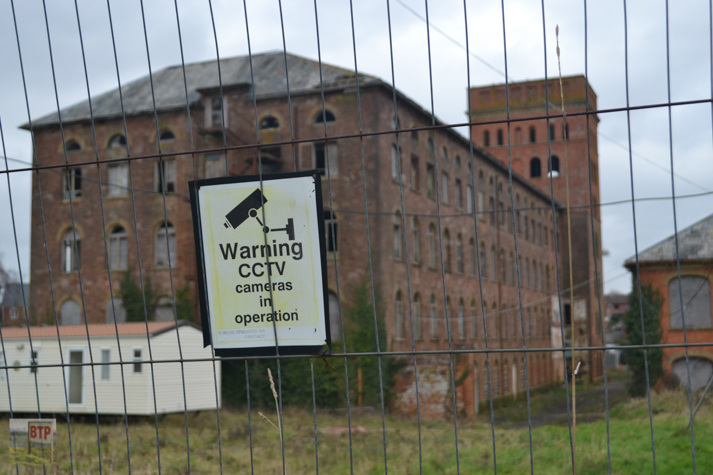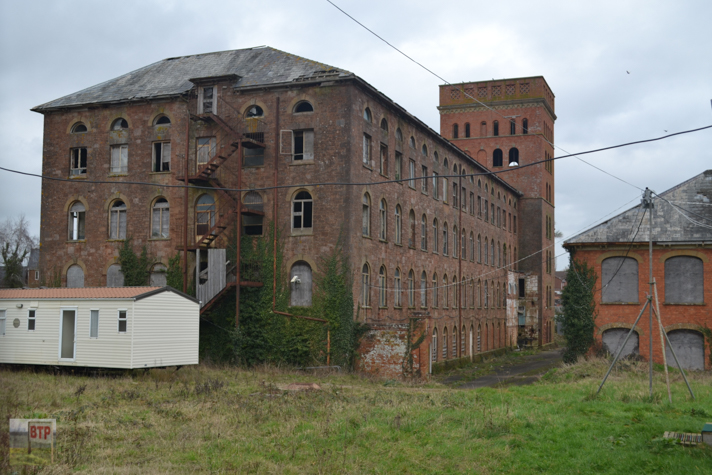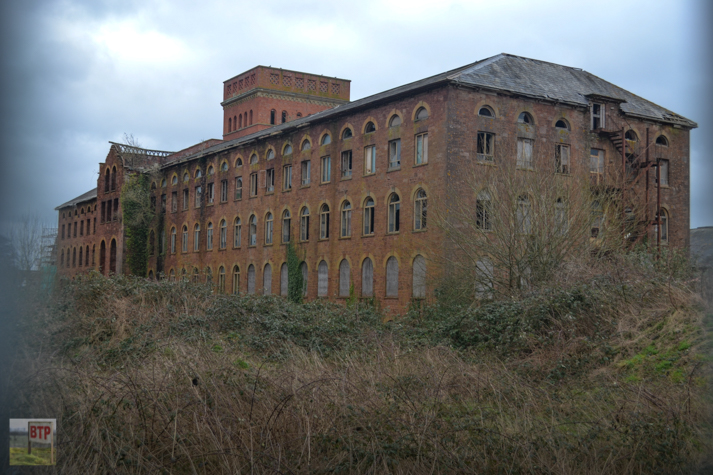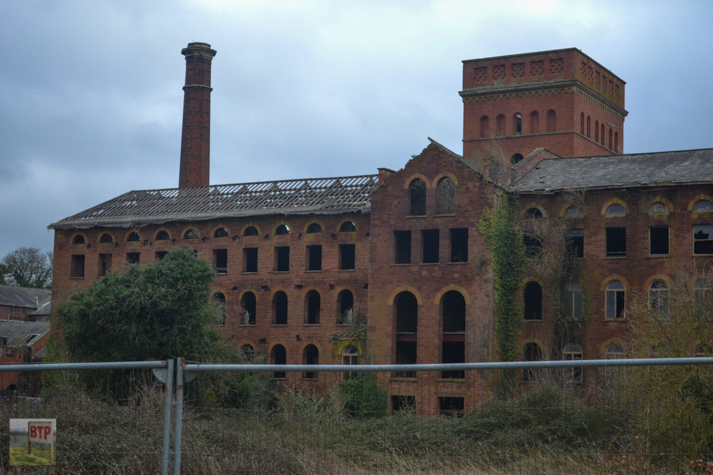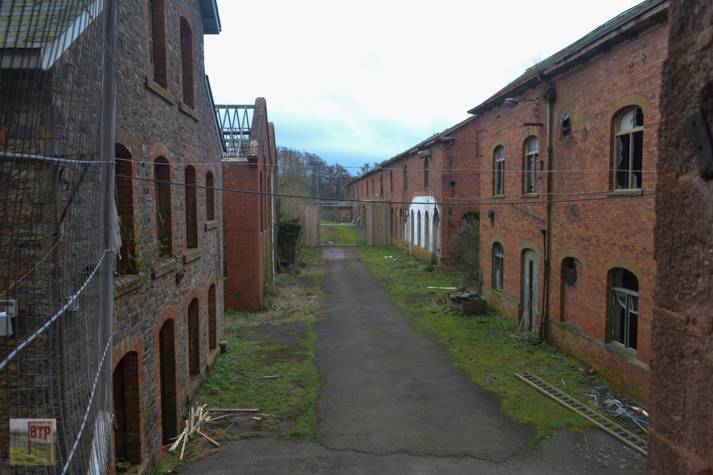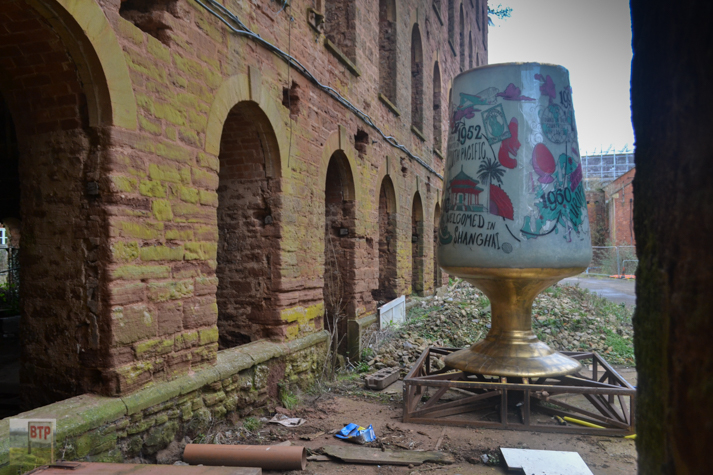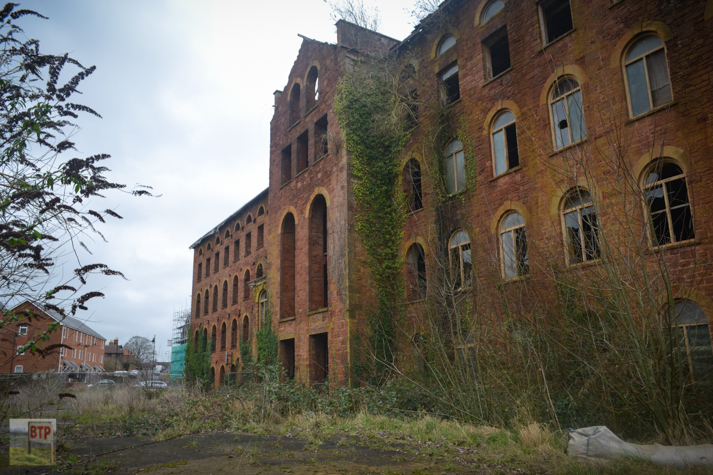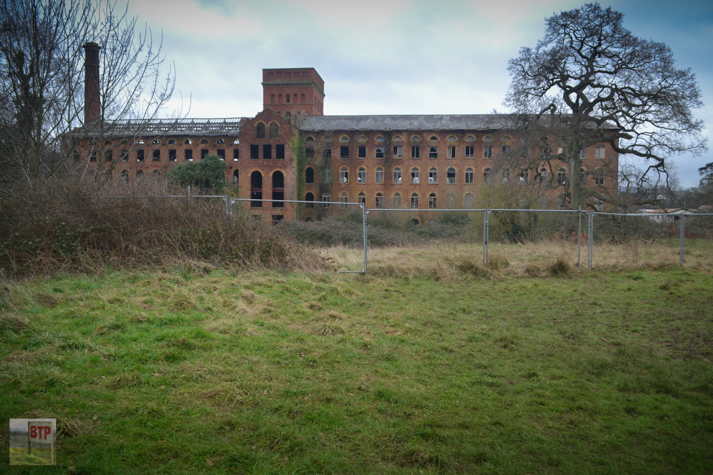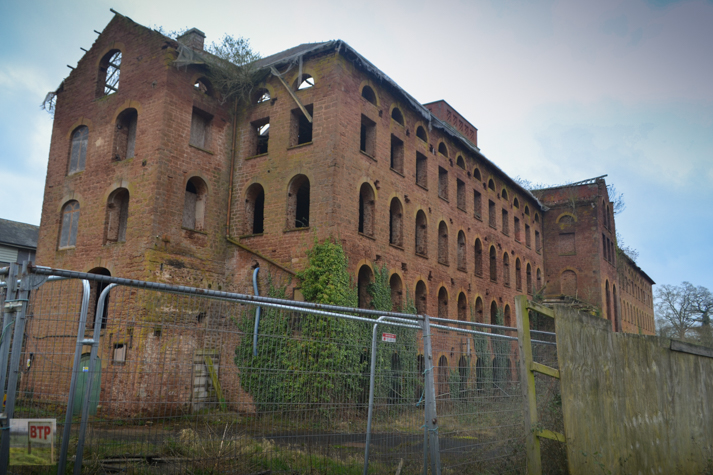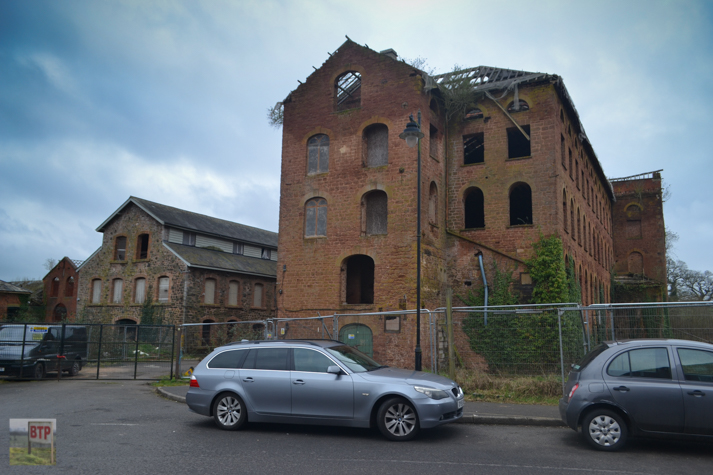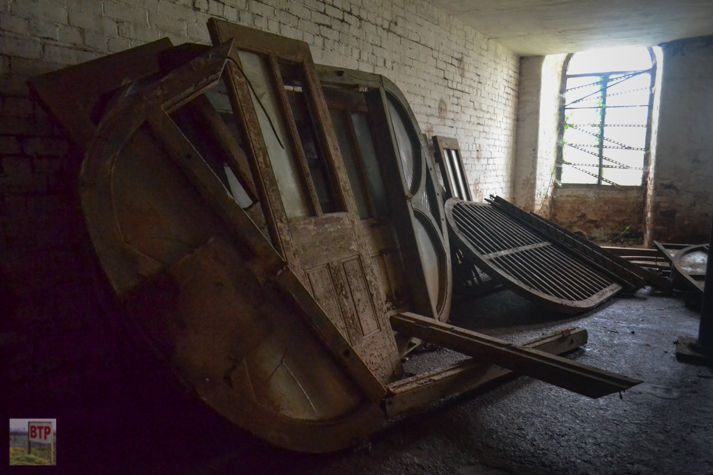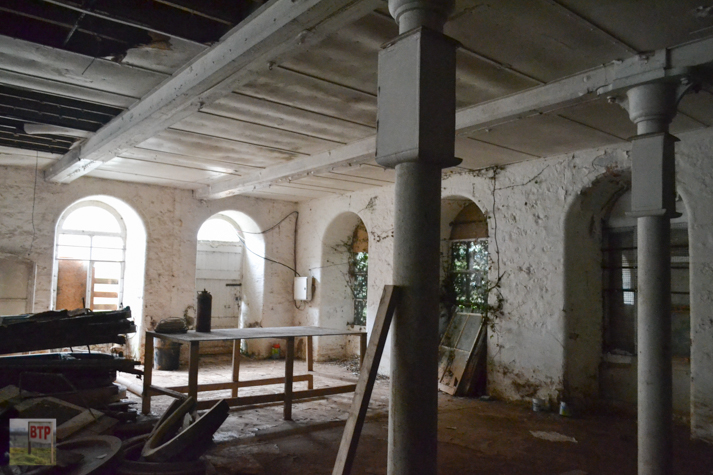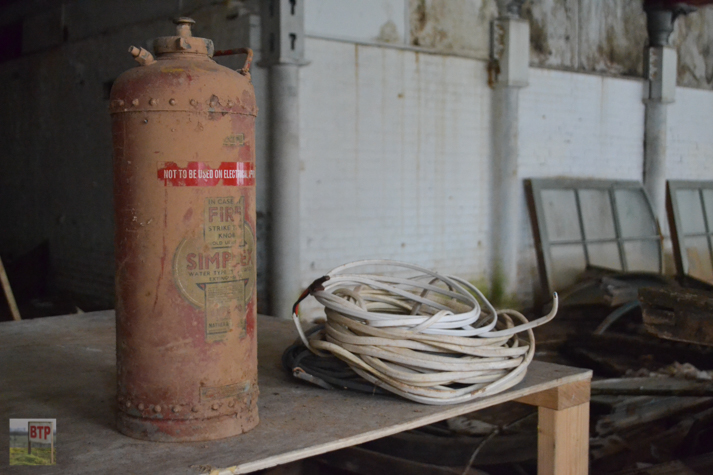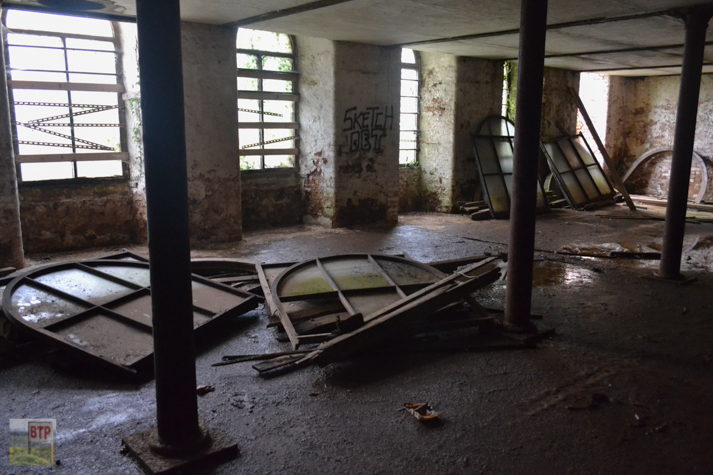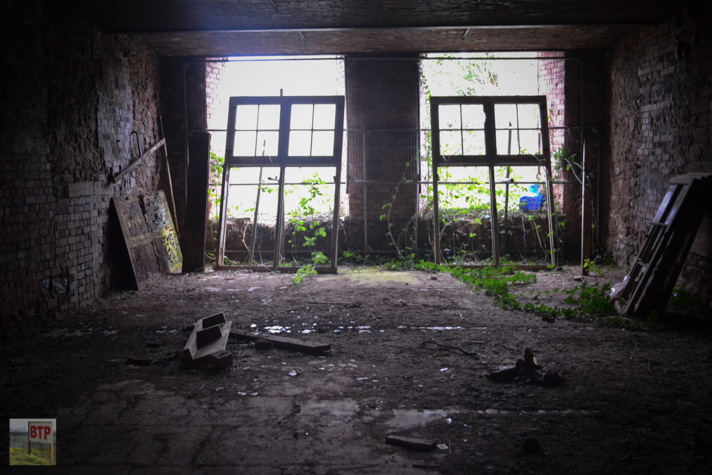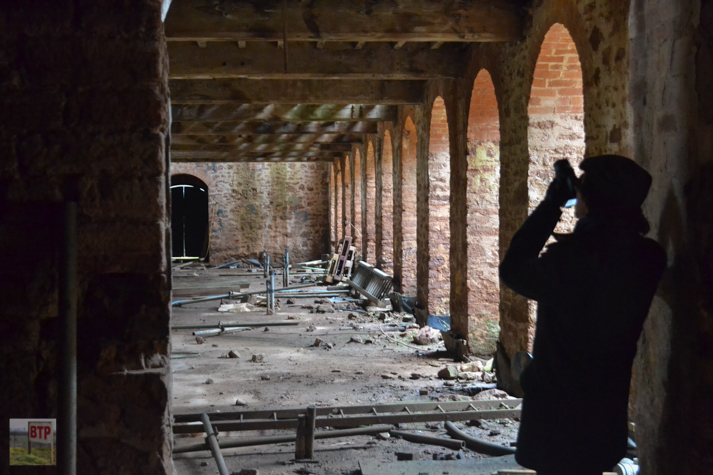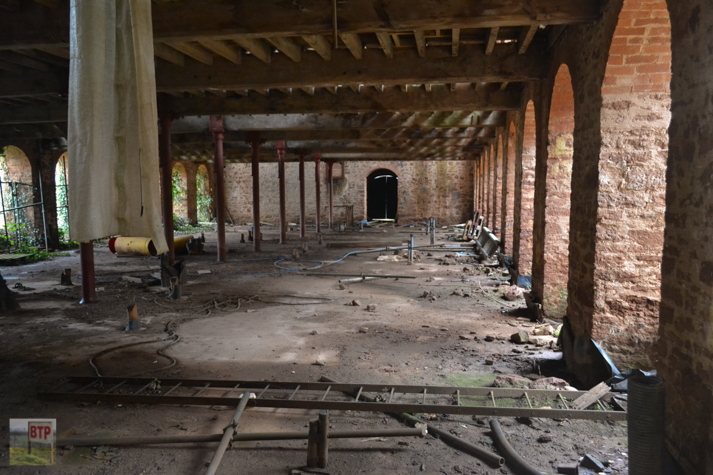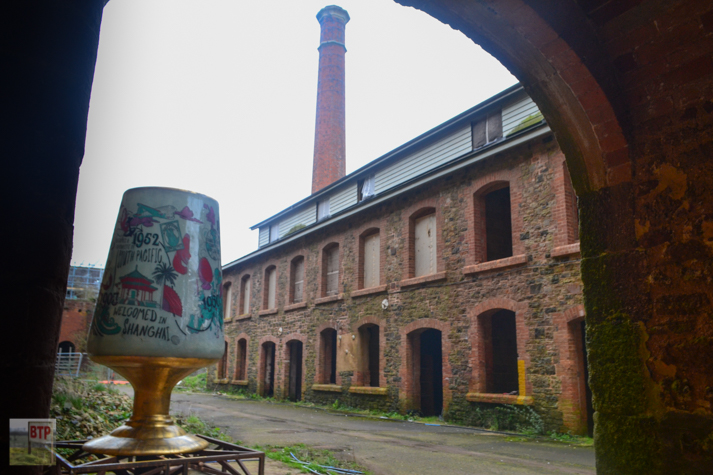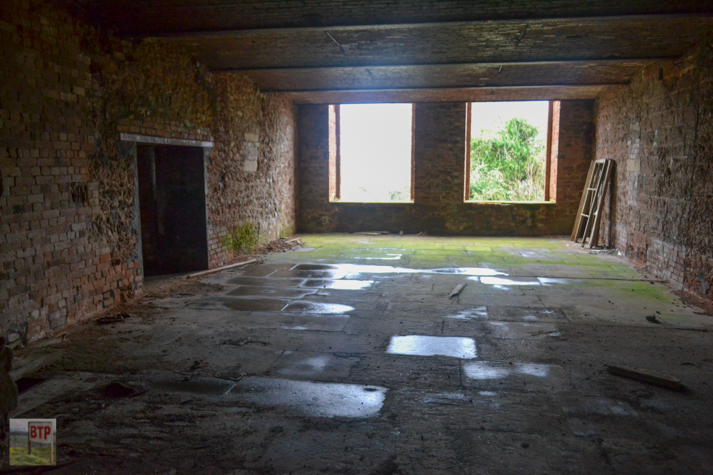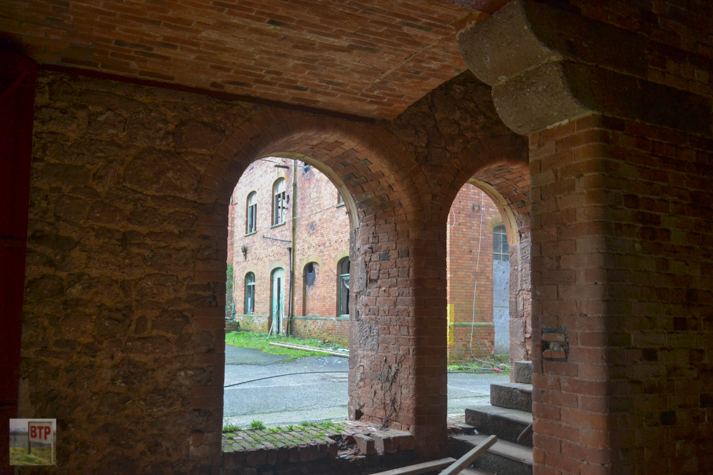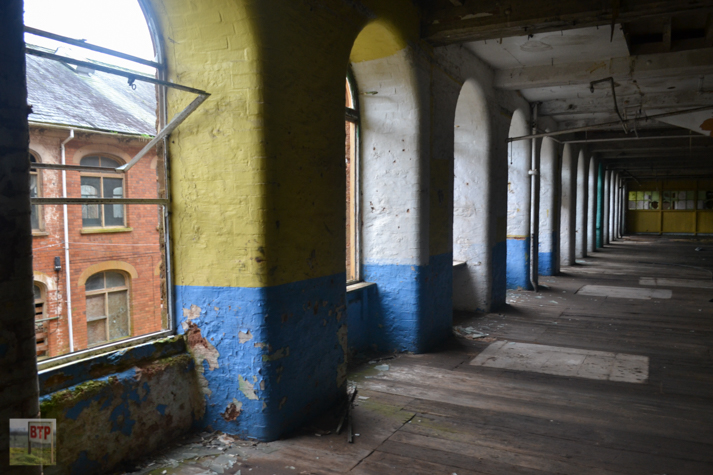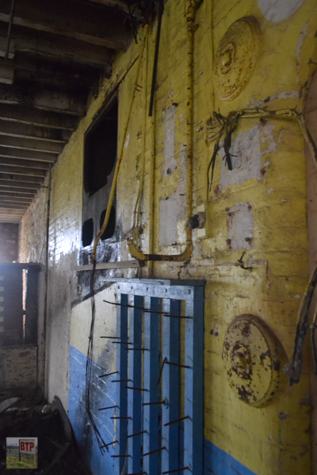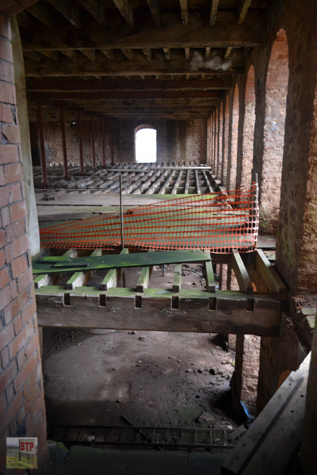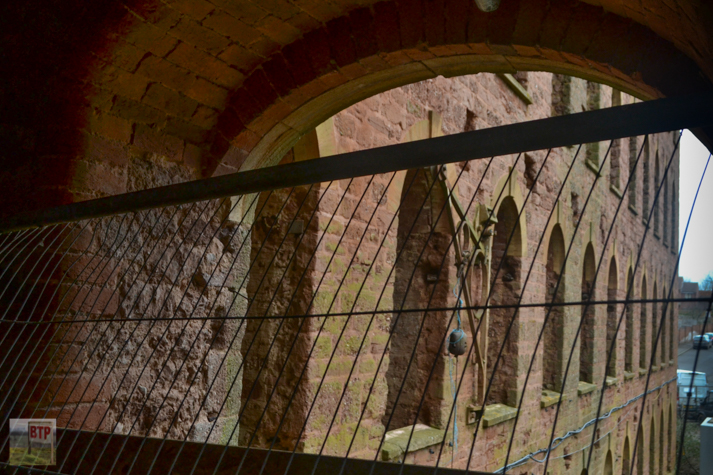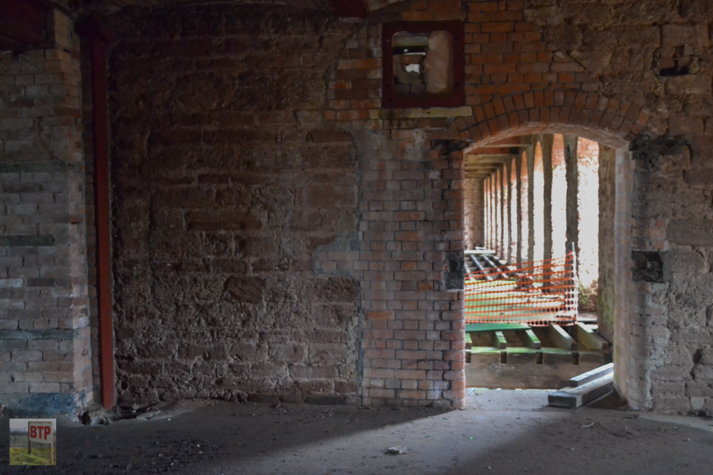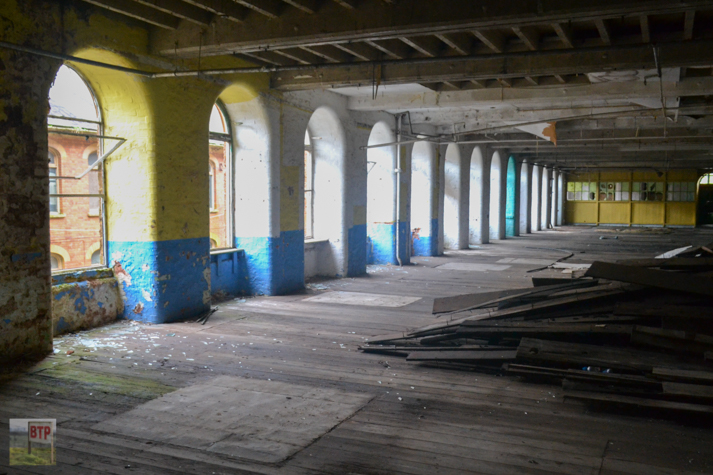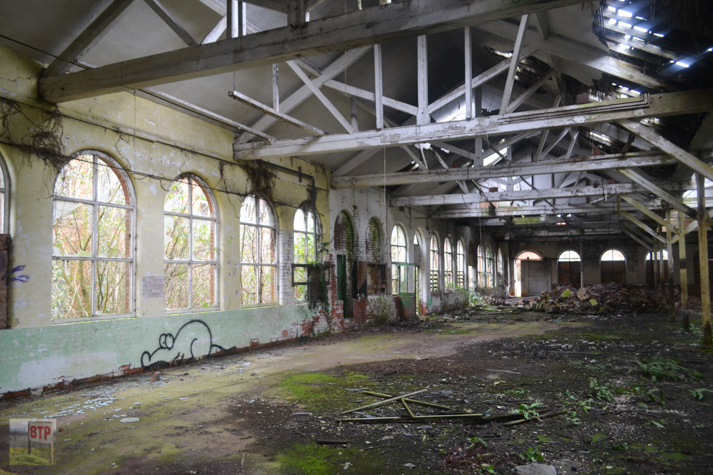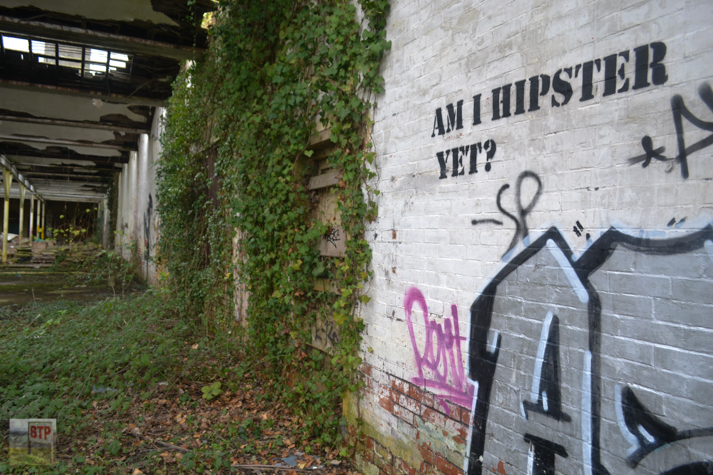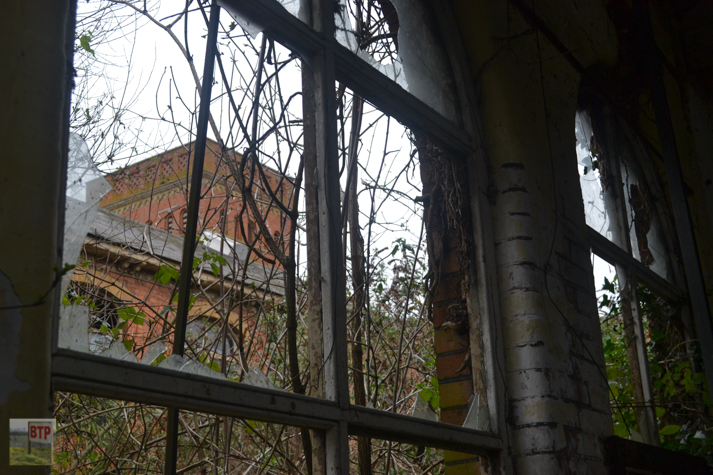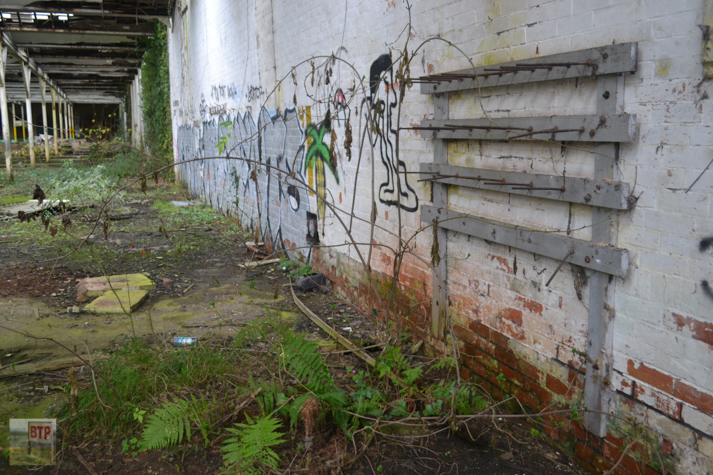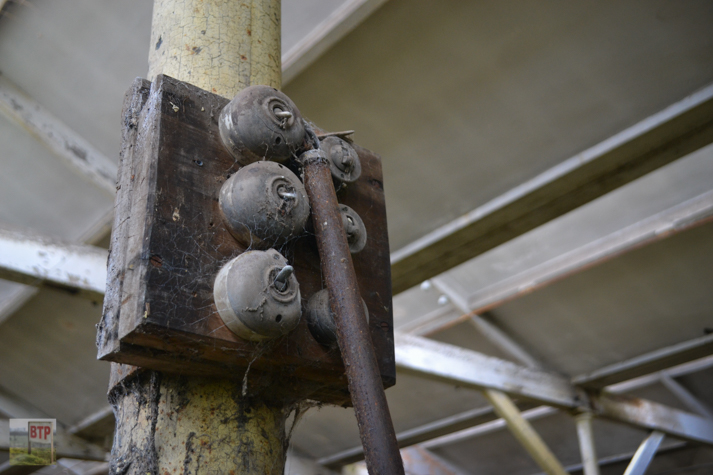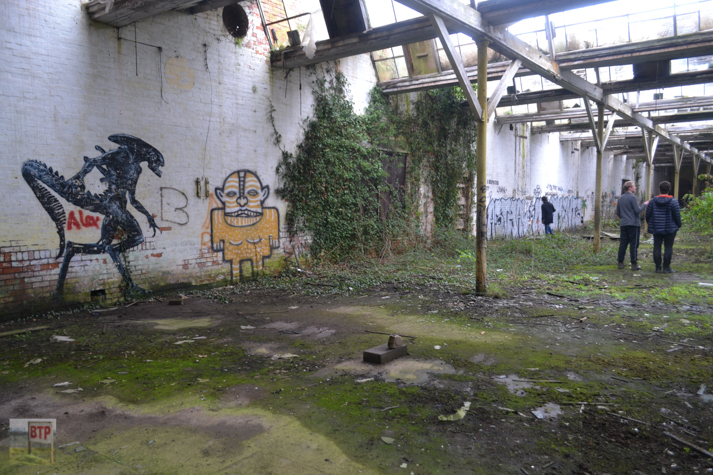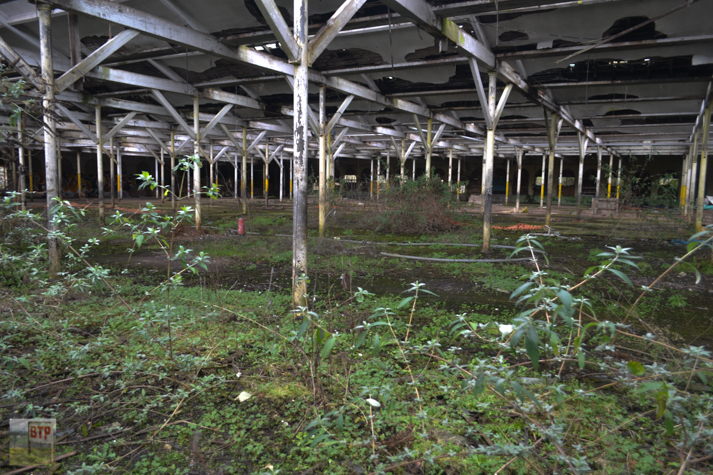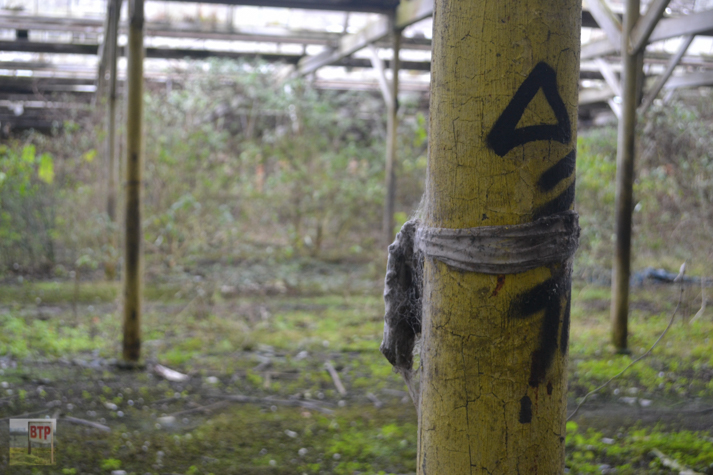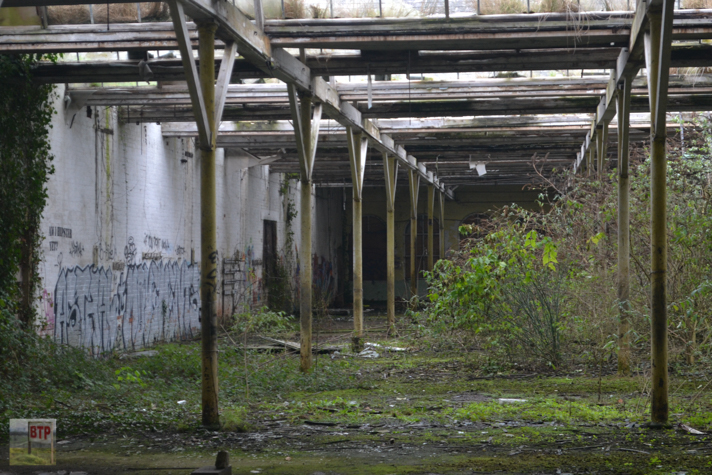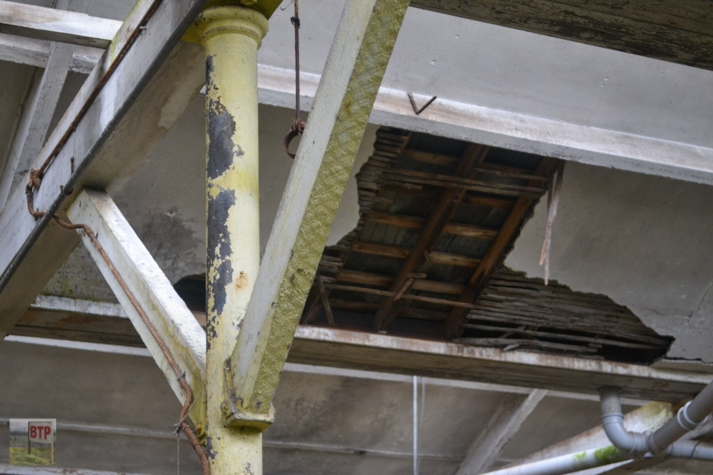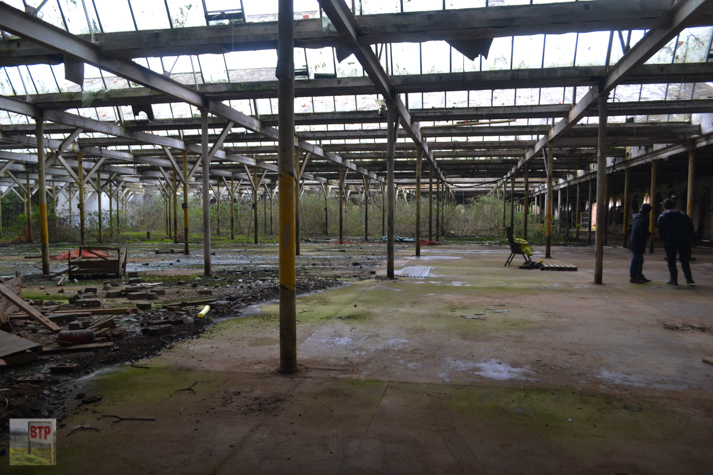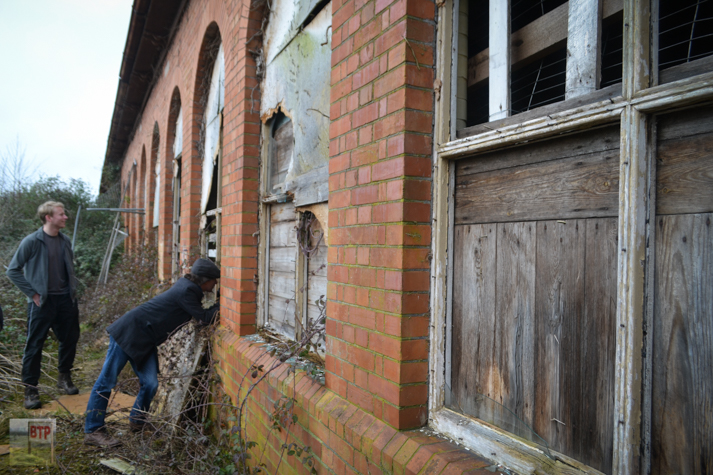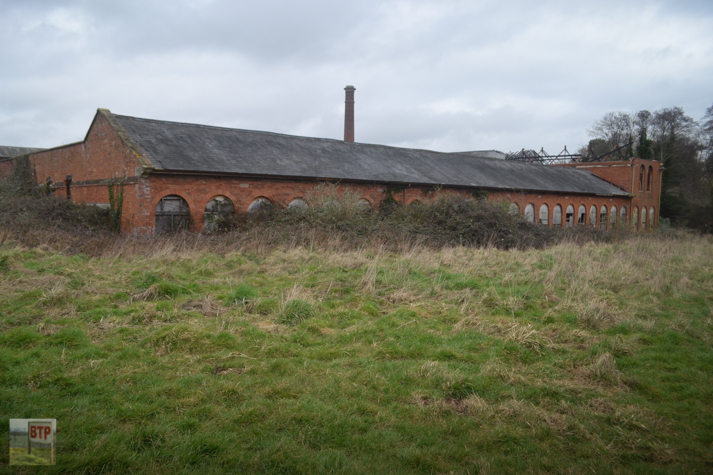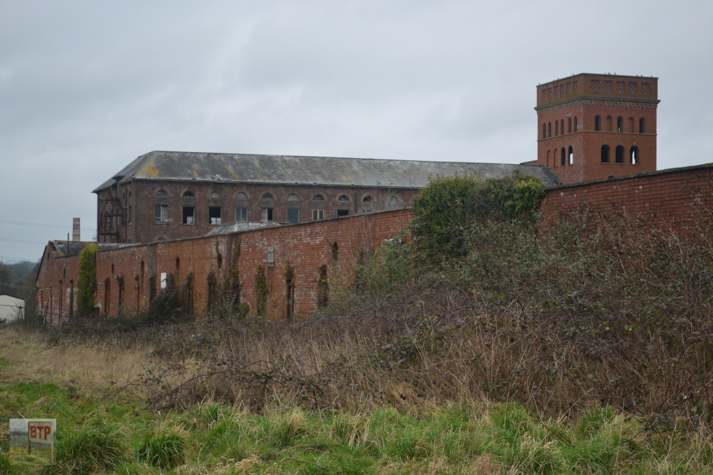Tonedale Mills in Wellington was once the largest woollen milk in South West England. It famously produced Taunton serge fabric and later produced the khaki dye used in British Army service dress following the Second Boer War. The factory opened in 1790 under the Fox Brothers at the height of the industrial revolution, but the western complex of the mill surviving today was rebuilt after a fire in 1821. The most impressive of the surviving structures is the five-storey spinning block built during the 1860s complete with non-fire proof wooden floors. Another huge building on-site is mill no.5 (presumably) built in the late 19th century in red brick with a timber and slate roof, taking the appearance of a vast warehouse. This was likely used for manual wool sorting. The mill now lies abandoned following industrial decline and cessation of production in 1992. Attempts to convert the site into housing have fallen through, but the structures have received a grade 2* protection status and the mill is now a building site as it receives efforts to preserve this structure identified as ‘heritage at risk’, including efforts to reconstruct the northern wing of its spinning block.
With attempts to save the structures ongoing at the time of our visit, we had to keep a low profile. We managed to explore the large warehouse-type building and the first several floors of the main spinning block. The solid red stone construction of its fireproof stair-block was architecturally impressive and made for some very aesthetically pleasing photographs. A strange giant decorated goblet taller than head height sat out in the driveway – we have no idea what it was for!
Read more about its history at Historic England

